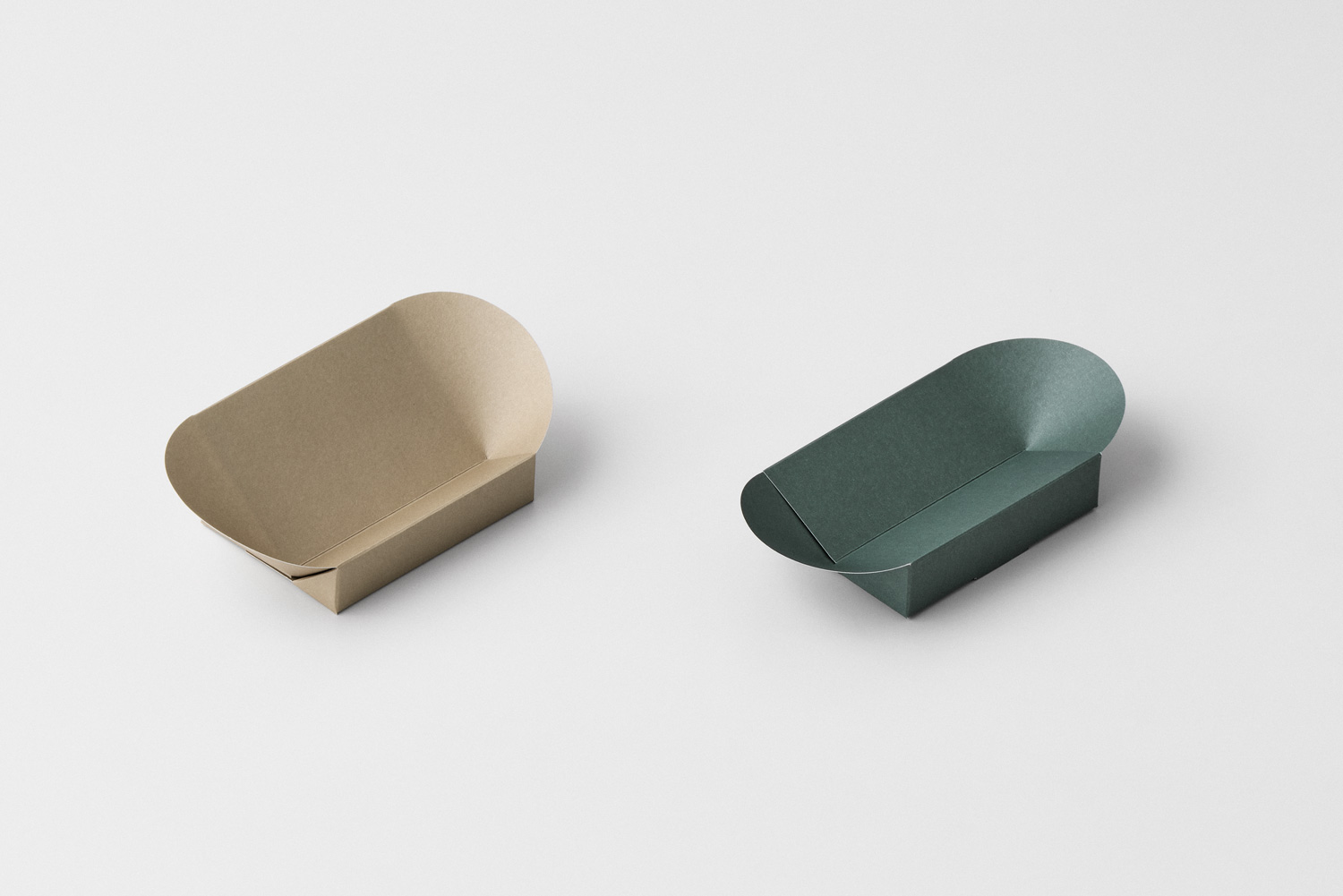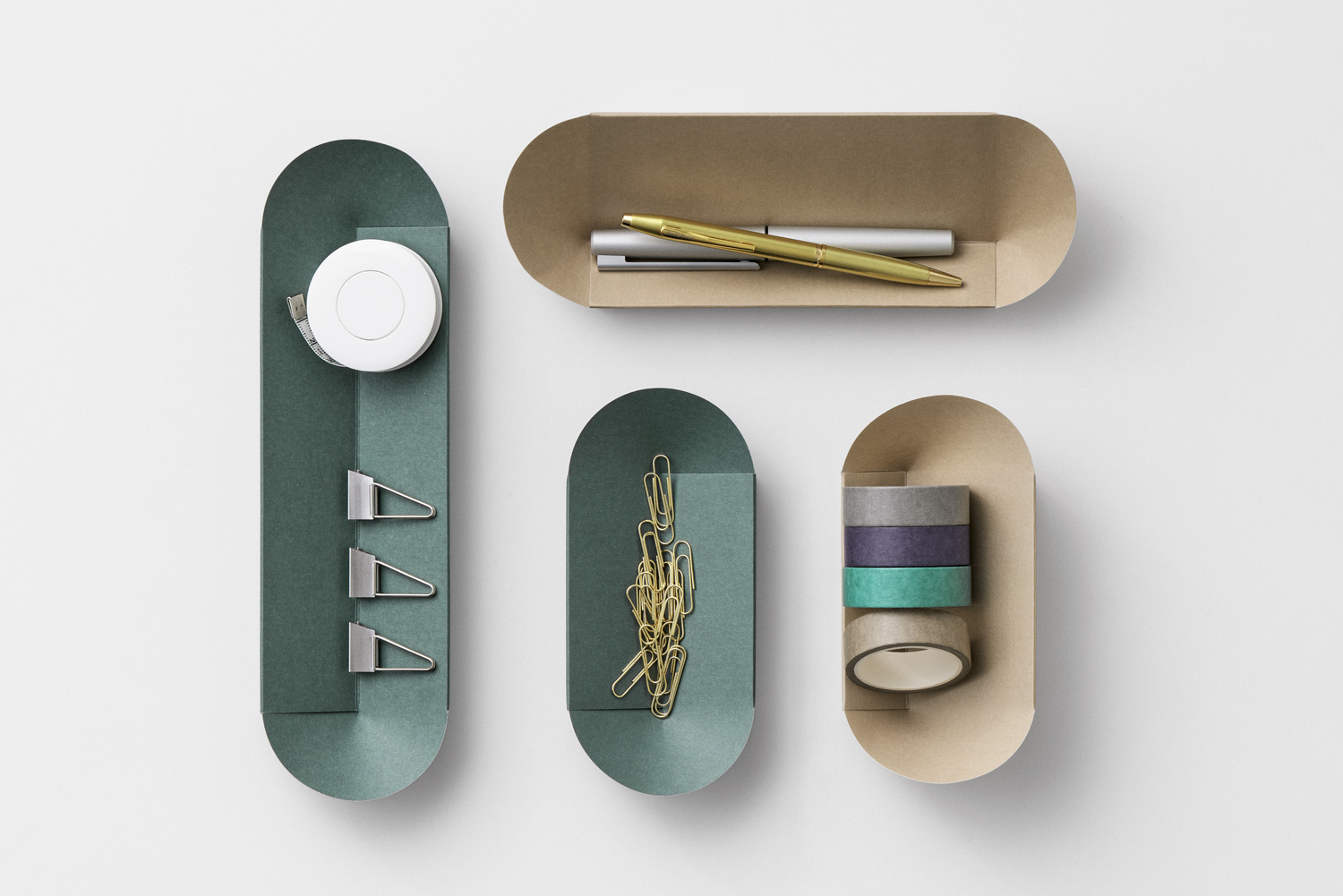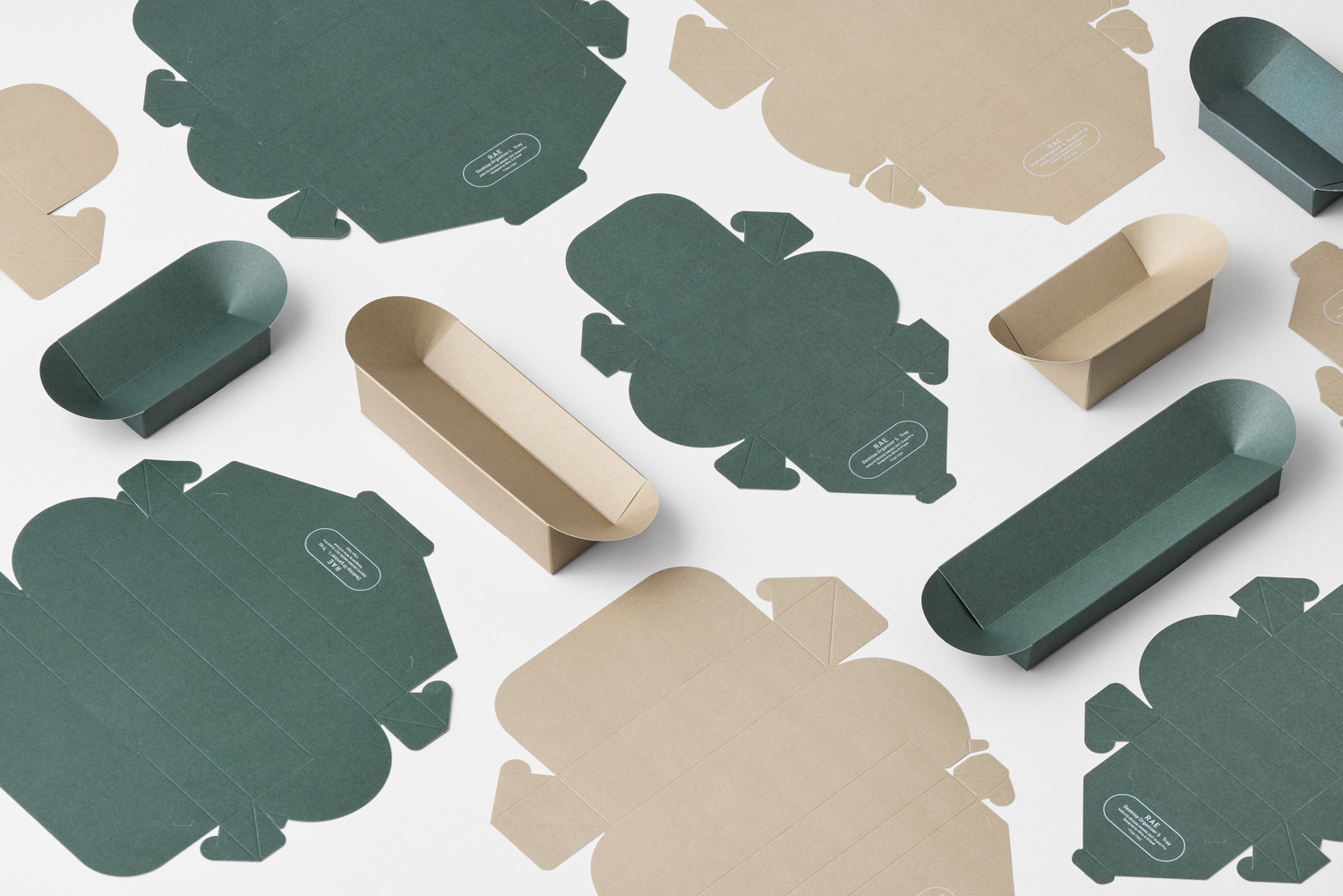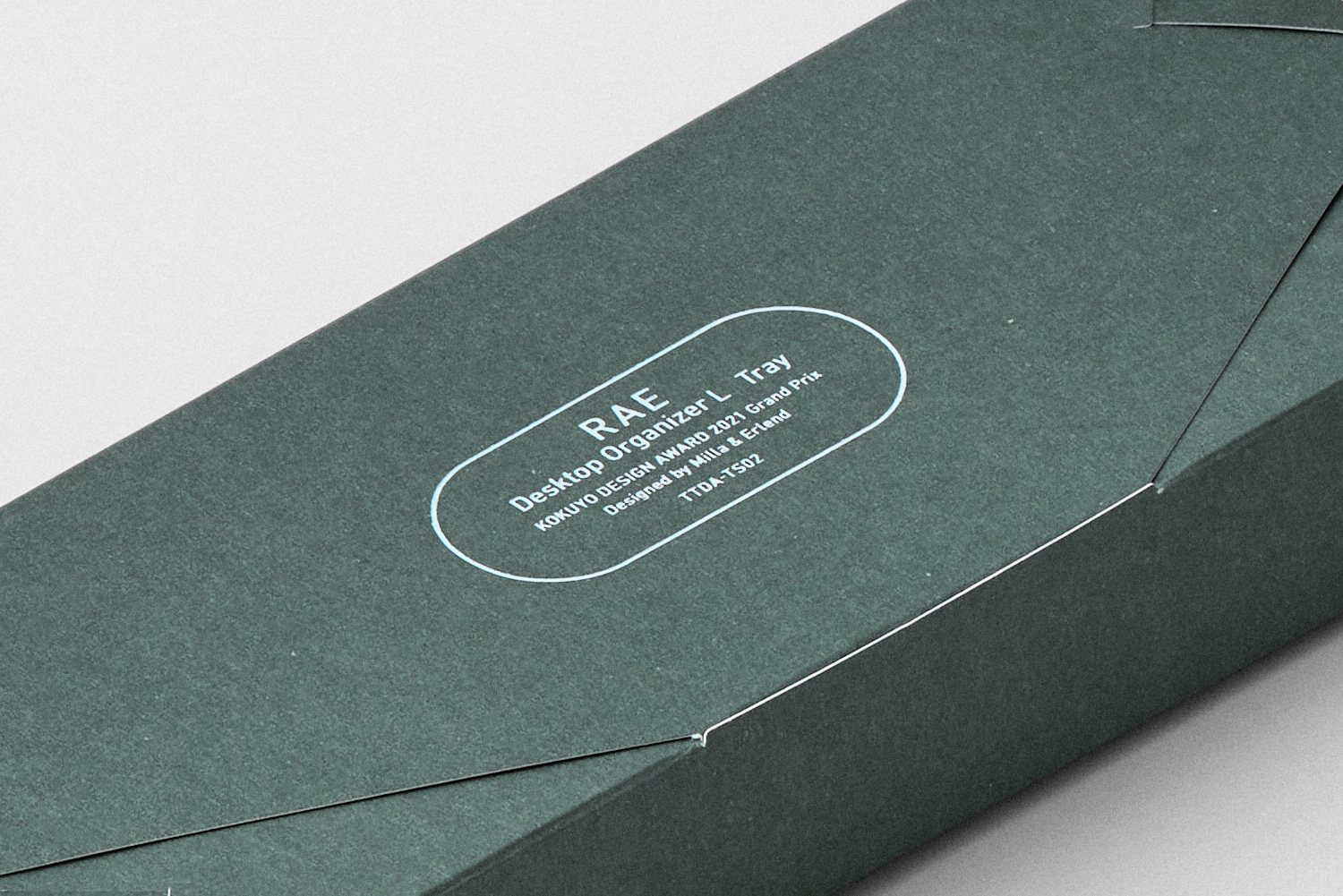FROM CONTEST TO MARKET
RAE
<2021 Grand Prix>
In 2020, many people were faced with uncertain circumstances and changes to working conditions that were totally new. This is a desktop organizer (tray) that naturally adapts to these new working conditions that keeps tools, space, and the mind at ease in the new environment.
Introduction video about products :
https://youtu.be/on5wEVfSFjo(YouTube)
*Only available for purchase in Japan.
The KOKUYO DESIGN AWARD 2021 Grand Prix award-winning work, RAE, was created by Milla from Finland and Erlend from Norway. It was the first submission from Europe to win the Grand Prix, and attracted a ton of attention. The pair are now based in Finland; Erlend works as an industrial designer and Milla runs her own cosmetics company.
They had only just moved there from South Korea when they applied for the KOKUYO DESIGN AWARD 2021. “At the time, we had been looking for various opportunities as an early-career design unit. We’d known about the KOKUYO DESIGN AWARD for a while, but this time we had come up with a great idea that fit the theme of POST-NORMAL, so we decided to apply,” Erlend said.
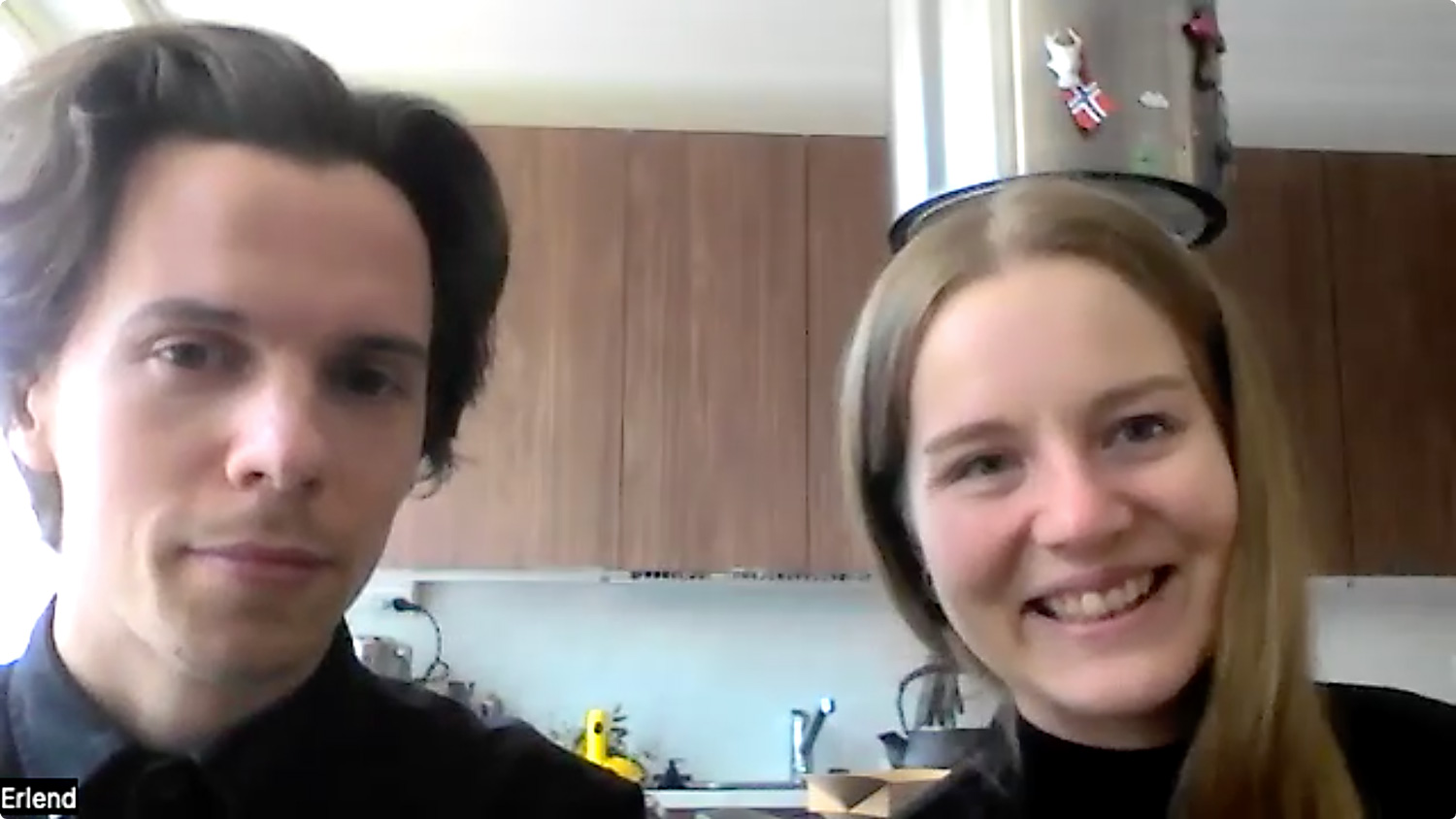
(Left) Erlend Storsul Opdahl, (right) Milla Eveliina Niskakoski
It was also at this time that the 2020 pandemic drastically changed how people live and how they work. RAE is easy to carry, easy to use, and simply beautiful in these new situational changes. The origami tray they proposed was highly praised by all the judges. “The judges understood and agreed with the essence of our concept. We were really delighted,” Milla said, looking back on the contest.
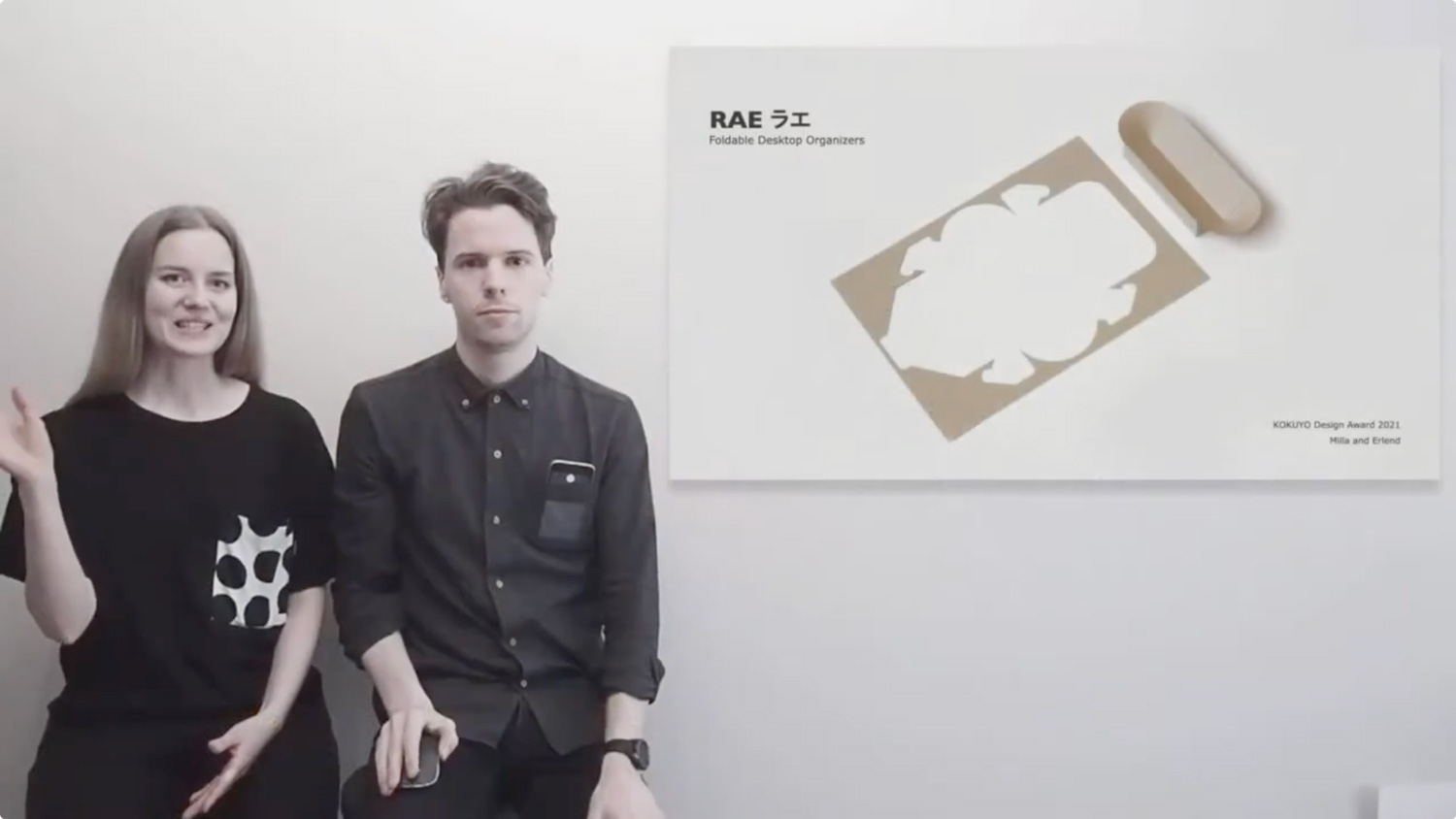
The final judging. They presented online since they were unable to come to Japan due to the pandemic.
We wanted to add a new element
After RAE won the Grand Prix, KOKUYO immediately began working on commercialization. According to Takeshi Fujiki of KOKUYO, who oversaw commercialization, “The prototype Milla and Erlend designed was well thought out and could have been commercialized just the way it was. But after consulting with them, we decided to add another new element.”
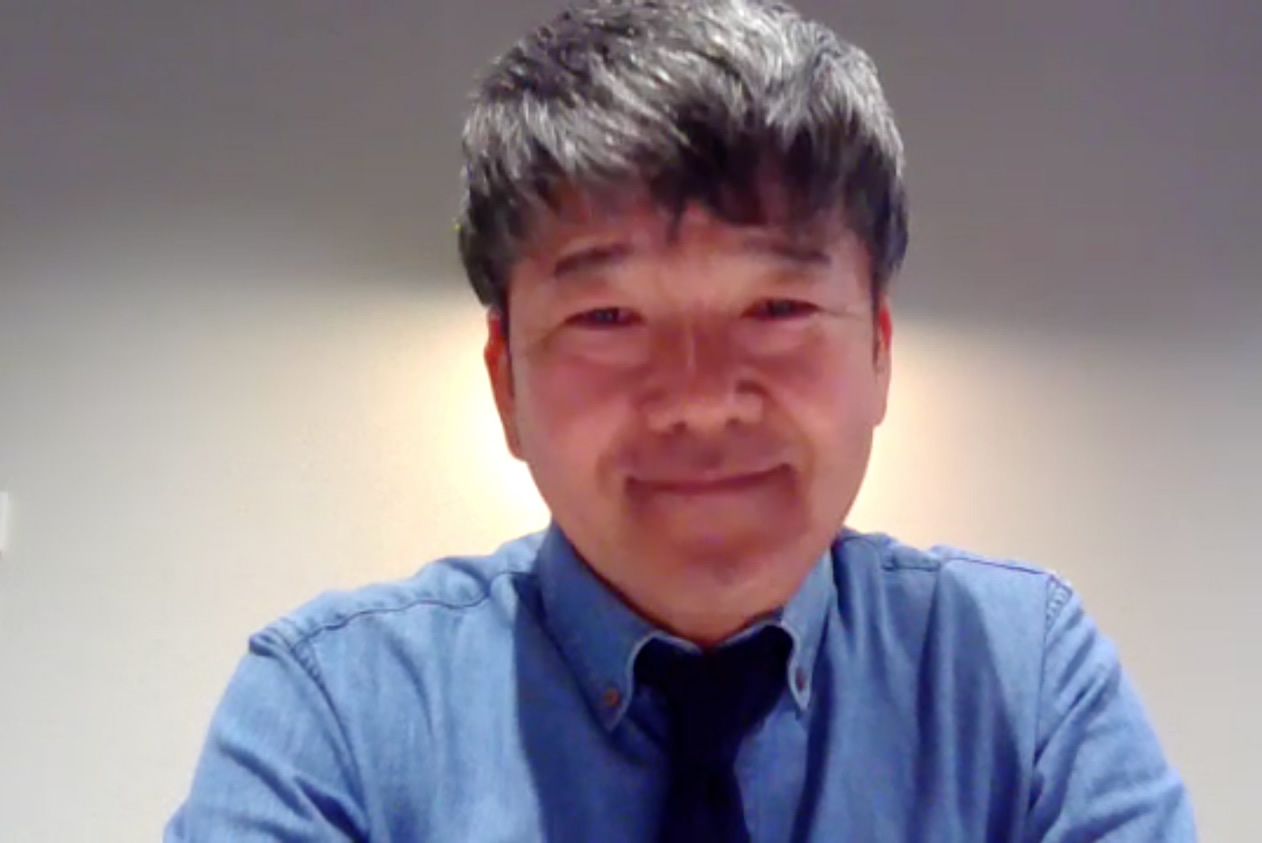
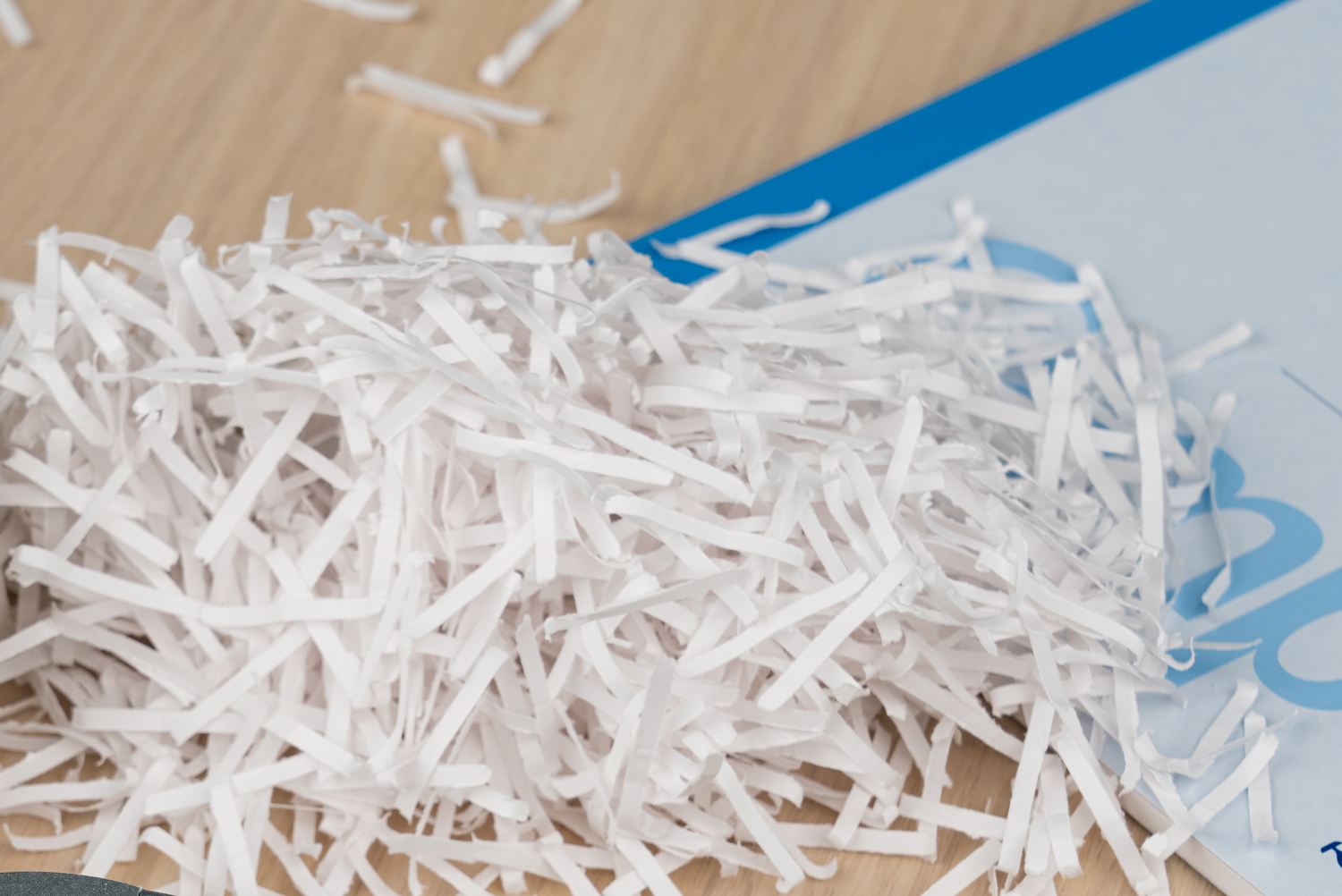
(Left) Fujiki of KOKUYO, who oversaw commercialization, (right) paper scraps left over from notebook manufacturing.
That new element is the paper material. KOKUYO wanted to take the large amounts of scrap paper made when producing notebooks, like “Campus,” and use it in an efficient way. “Until now, we’d been recycling all of it into things like cardboard and toilet paper, but since it was originally high-quality paper, we had been trying to come up with ways to use it as a product for a long time,” Fujiki stated. Why not use it for RAE? Milla and Erlend agreed saying, “We thought it was the perfect suggestion.”
When they applied, they spent a lot of time looking into paper materials as well as folding methods. “We looked at all aspects of paper, including thickness, hardness, and texture, so we knew how complex of a material it was,” Erlend said. “We also tried using metal. Eventually, we decided to stick with paper because it’s a sustainable material. So, when we got the idea to use recycled paper, we figured we could develop the concept of the work even further,” Milla stated.
Can we proceed with this?
However, using this recycled paper turned out to be a difficult problem to tackle. Fujiki explained, “Although it’s originally high-quality paper, the paper fibers get shorter in the recycling process. If you try to make a tray with that, it’s much more difficult to meet KOKUYO’s strict quality standards in terms of durability and friction resistance.”
Even if it managed to get it to quality standards, it didn’t meet the same quality of details that Milla and Erlend pursued, like the color and texture. For example, unlike paper that’s dyed to the core, the cross-sections of recycled paper become white, and the original work can’t be reproduced with 100% accuracy. Fujiki said, “I was worried if it was going to be okay to proceed with commercialization like this.”
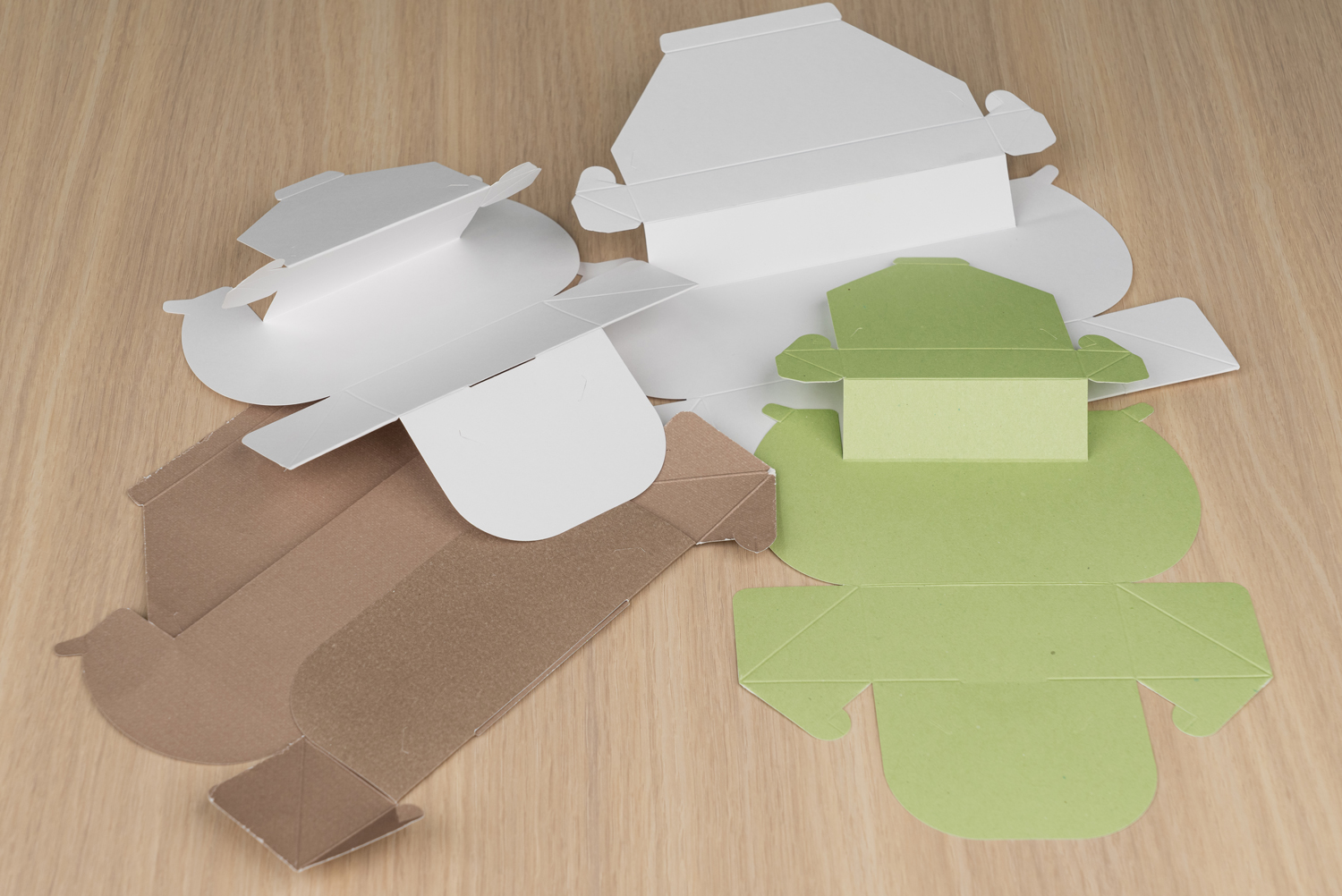
A sample of the production process. The work had been verified on various aspects after going through several prototypes.
After consulting with Milla and Erlend on the issue, they unexpectedly gave their approval. “This is paper that’s already fulfilled its purpose once. It would be wonderful if we could breathe new life into it through RAE. We’re glad they took care to stay true to our design, but there’s nothing better than being able to do something like that.” They also added, “Just because it’s not exactly the same as what we originally designed doesn’t mean it’s low quality. It’s just ‘different,’ and each paper has its own story. We think the design will be able to overcome the fact that the cross sections are white.”
Fujiki recalled, “Every time we had a meeting, I was surprised by how broad their perspectives were.” “They always talked about design with society in mind, rather than focusing on their own ideas and expressions. I myself have been involved in product development for a long time, but once again I strongly felt that design isn’t just about shaping something.” Despite the pair working in a different location and language barriers, communication went very smoothly through online meetings, emails, and exchanging prototypes.
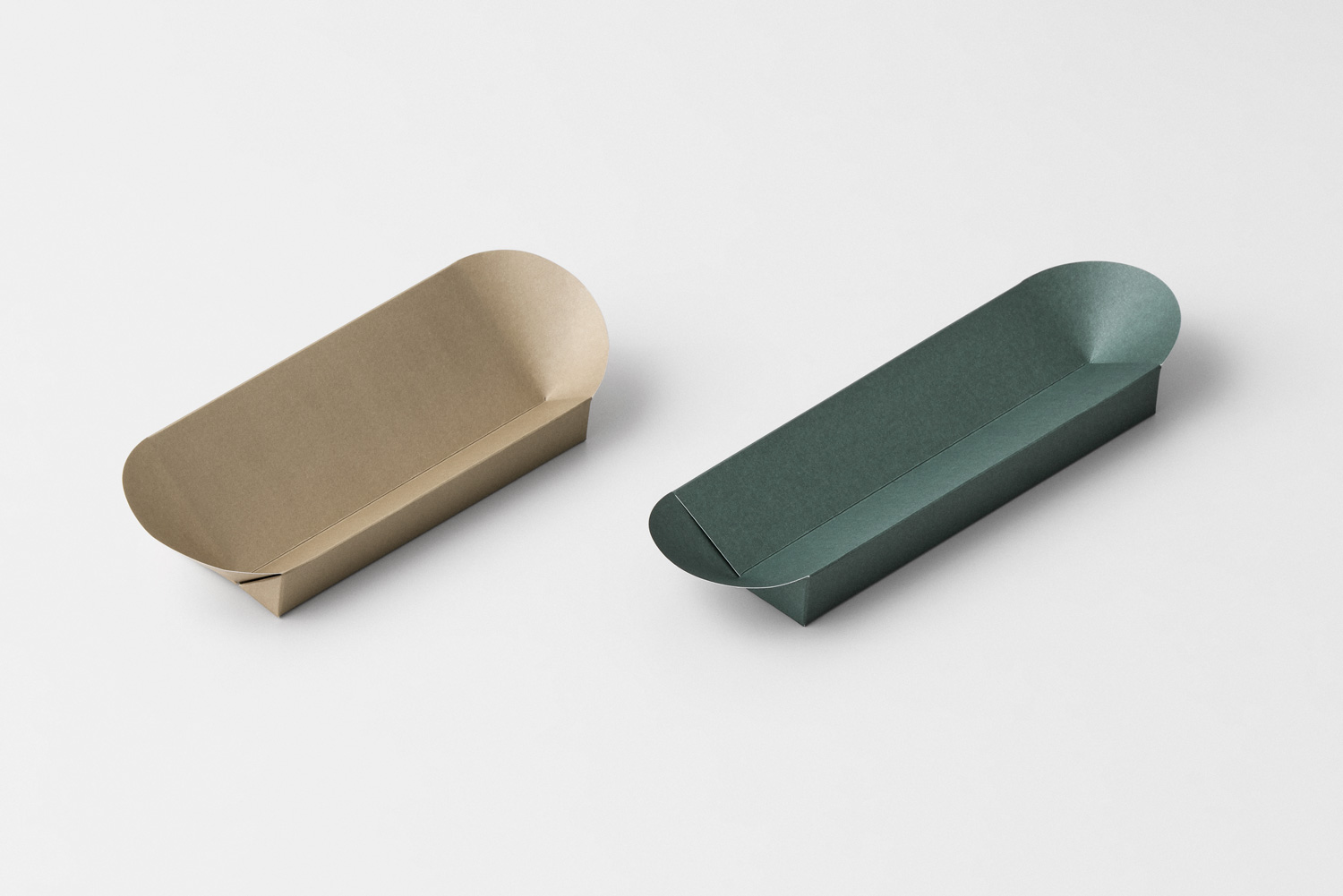
A completed “RAE.”
Trust your instincts
Fujiki unveiled the package design that Milla and Erlend also got to see for the first time. It is an envelope-shaped package made with paper that has a similar texture to that of RAE. “We originally planned to use a plastic wrap for the packaging, but since we were very particular about the paper we used for the product itself, we wanted to handle the packaging in a similar way. We eventually decided to use solid paper,” Fujiki explained.
Erlend smiled and expressed his excitement when he got to see the results. “I’m really glad they put thought into every detail of the concept, even down to the packaging.” Considering how difficult it can be to stay true to all of the details of a design when it comes to industrial design, it is wonderful when they can be brought to the world as they were intended.
”
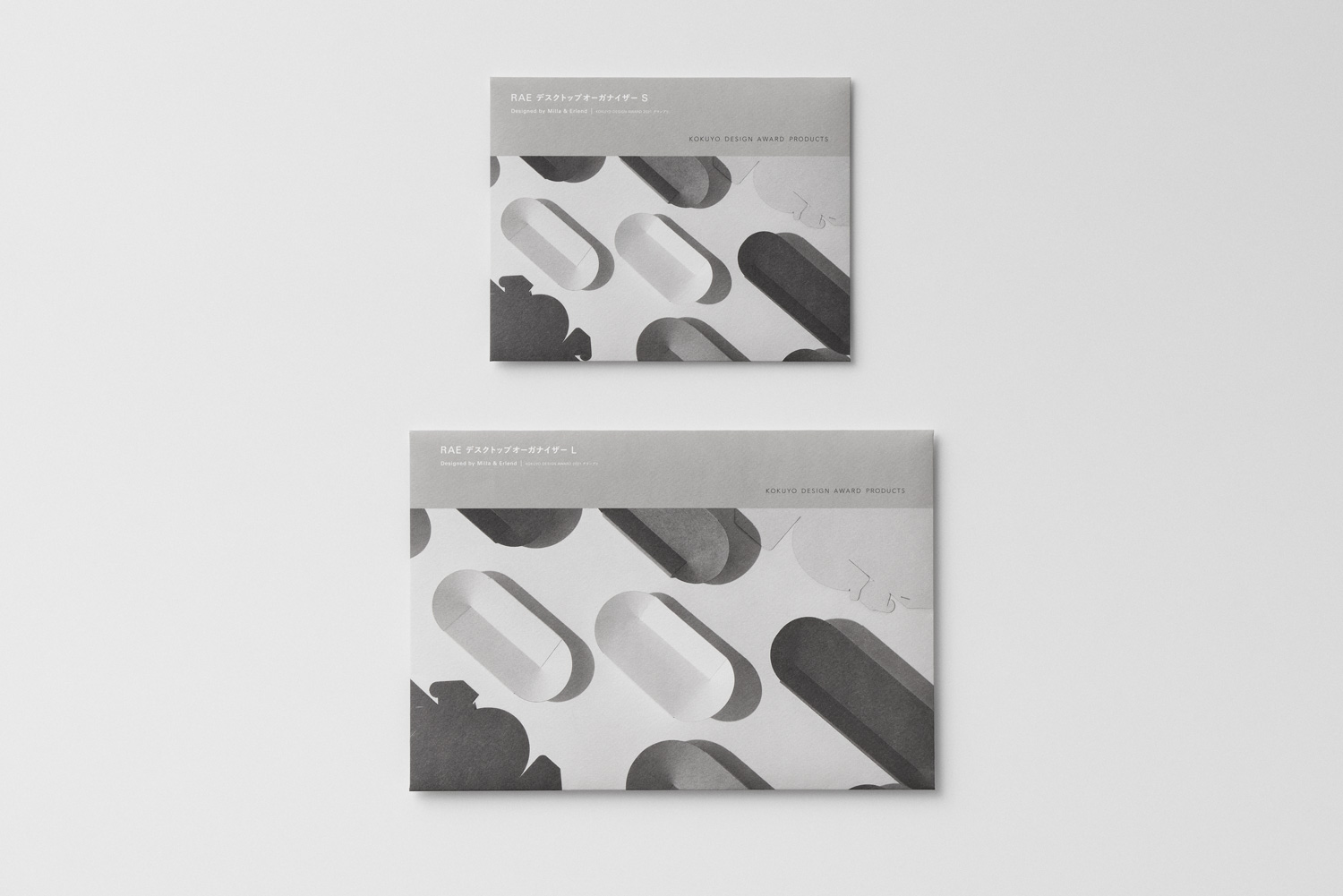
Since we were particular about the paper used for the product, the packaging received similar treatment.
We asked Milla and Erlend to reflect on the entire process they had been through, from participation in the KOKUYO DESIGN AWARD to commercialization. “The award itself was very well organized, and it made it easy for us as applicants to devote our efforts to the design. We also thought it was great that we could brush up on our design through judging and commercialization during the whole process.”
Lastly, they gave some words of advice to anyone considering applying in the future, “Trust your instincts.” “You need to take what you believe is the best design, and express those feelings. Even if the judges or KOKUYO say something, you shouldn’t necessarily take it as criticism or rejection. They’re the ones who push us as designers, and are committed to finding great ideas and bringing the best designs to the world.”
The title of the work, RAE, refers to the Finnish name of a kind of confectionery that sounds similar to the Japanese cracker called “arare.” This work was made into a genuine product through a deep mutual understanding of values and sentiments of the people involved. All of the designers and developers involved said the project was a wonderful experience, and hope you will see for yourself the fruits of their labor.
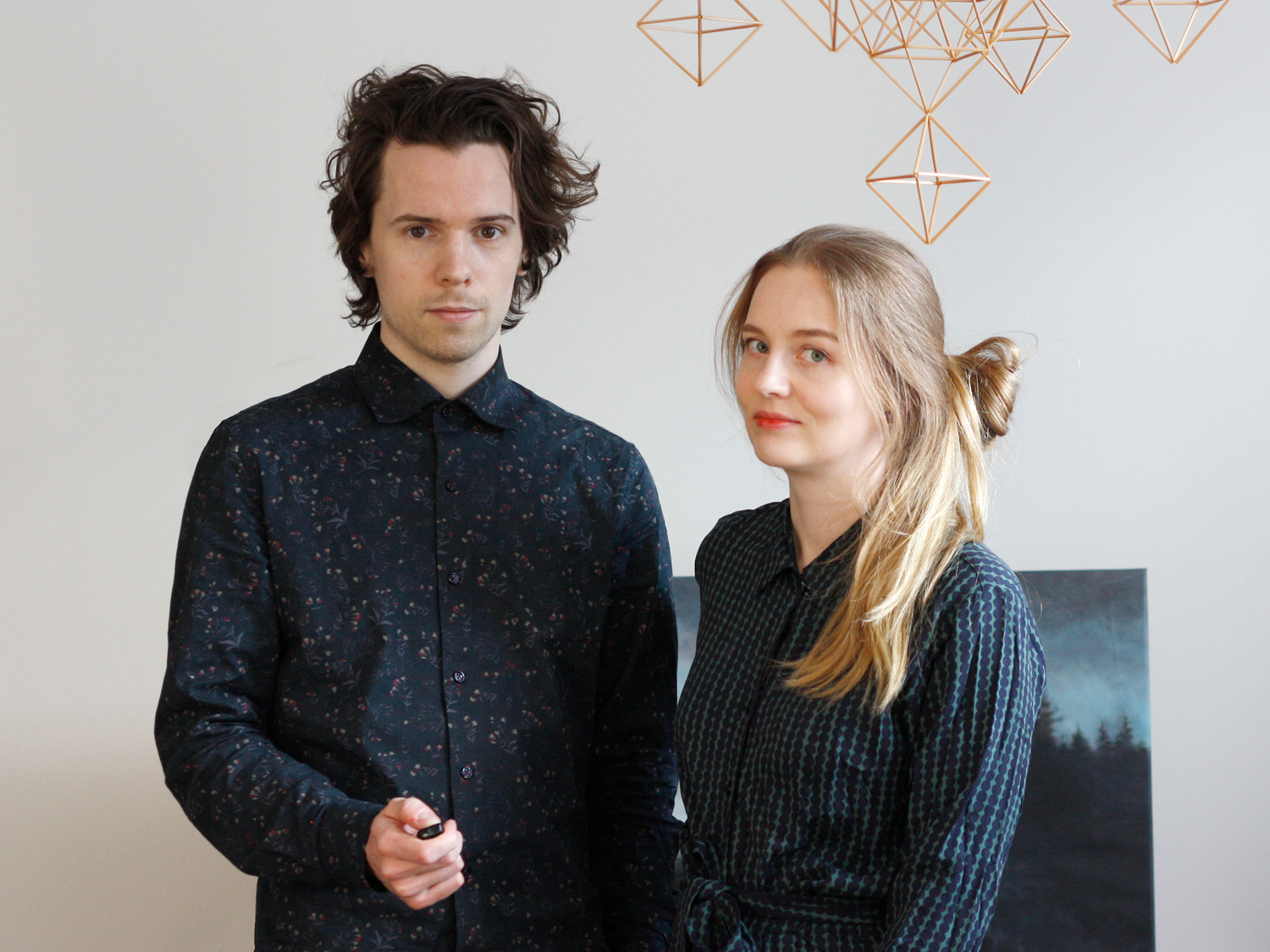
After winning the KOKUYO DESIGN AWARD and commercializing it, Milla and Erlend said, “We feel much more confident about working on our designs.” They had a relaxed discussion from beginning to end.




















